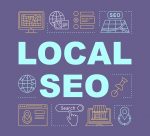
SEO Content
Content is exceptionally critical for SEO. Without content, Search Engines would not have adequate data to mark your pages appropriately and help you rank. If you do not have a consistent SEO plan, then the pages on your website will never be seen or shared.
SEO content enhances your visibility on the Search Engines, which then pushes traffic to your website and promotes consumers to buy your goods and or services. By including an SEO content plan, you can add massive potential to your company.
SEO Content – What is it?
Content entails images, written content, audio, and video that you present on your website. Some examples of SEO content would be Articles, Case studies, Blog posts, Whitepapers, and more.
Google, one of the leading Search Engines in the world, wants to provide search results that are useful and applicable to the consumer. As a result of staying updated with SEO content, Google will consider it important and applicable so that it is can potentially belocated on the first page of the Search Engine result page (SERPs).

SEO Content – How do you create it?
Over the years, Google’s search algorithms continue to evolve. These changes are always important to focus on, so that you can understand how to keep up with SEO content and how to achieve a top spot on SERPs.
SEO Content is not normal content you post daily, on your personal account, it needs to be high-quality and useful to the customer. User understanding is an essential factor in how Google determines which content should be positioned in the search engines for top spot.
An example would be, if your company has a blog, the greatest way to position your blog posts is to write content that advances the topic from a diverse viewpoint or delivers additional material than various websites have written about a similar topic.
In order to write SEO Content, you will need to understand a few details.
Readability:
Google favors content that has a clear reading level, so that readers can easily understand what they are reading.
Length:
Longer content has been proven to position better on search engines. Nevertheless, it is very crucial to keep paragraphs small in your blog posts and additional website content. Break up the paragraphs in 1-4 sentences.
Formatting:
Formatting holds an essential role in SEO. Using headlines throughout the article helps the reader navigate the content with ease. Using bullet points is a simple way of directing readers’ attention to a directory.
Tone of Voice:
Maintaining a steady tone of voice in your writing helps the reader to recognize the viewpoint you are trying to write from.
Keywords:
To discover what words are being searched by the users the most, we use and rely on keyword research. Keywords help search engines comprehend that your content is about a specific topic. They can also tell you what specifically to write about, and if there is a larger search volume that means you will have a better chance of people reading your content.
Linking:
Google has stated that internal linking to other pages on your website and backlinks from other websites can also enhance SEO.
Alt Text:
Text that offers a description of an image for accessibility uses.

Common Mistakes in Digital SEO Content
Target Wrong Keywords
The most efficient keywords to aim for are longtail keywords that will have high-level search volume but low competition.
Using Too Many Keywords
One concentrated keyword is the standard per page of your website. However, do not overuse your keyword as Google takes notice of this. Instead, sustain a sensible keyword mass.
Duplicate Content
Google will only index original content. Google does not care as much for a copied or duplicate version.
Missing SEO Title Tags and Meta descriptions
These tags can help Google comprehend what the page is about when it is looking over your website. Ensure that you have a Meta description and Title tag that use your keyword.
Missing Image ALT Tags
Alt Tags help you with accessibility, for those who have problems with sight. Alt tags can help a user navigate web pages. All graphic images should have alt text and Google favours website pages that have taken accessibility into account.
Poor Linking
Google likes when you give sources for your content or added resources that will assist the user to comprehend the topic at hand. Make certain you are interlinking between the relevant pages on your website, this helps improve your relevancy score on all your website pages.
Conclusion
Now that you understand that content is an important element of SEO, speak to an expert from Insiteful Solutions about how you can create the right content to help increase your website traffic and your online visibility.



